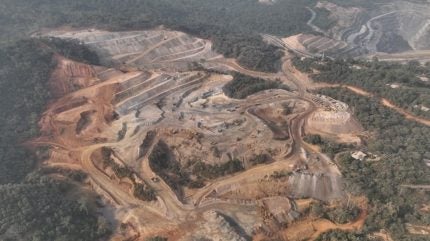Sign up for daily news updates from CleanTechnica on email. Or follow us on Google News!
U.S. crude oil production averaged 13.3 million barrels per day (b/d) in December 2023, following sustained productivity increases at new wells, according to our latest Petroleum Supply Monthly (PSM). U.S. crude oil production has increased to record highs since 2010 and has risen even more quickly in recent months. These record highs have come despite declining U.S. drilling activity because the new wells are more efficient.
Since first surpassing the previous record in August 2023, U.S. crude oil production has increased another 2%, exceeding the pre-pandemic November 2019 peak by 0.3 million b/d.
The number of new wells brought on line by drilling activity has historically been the key determinant of whether crude oil production increases or decreases. However, advances in horizontal drilling and hydraulic fracturing technologies have increased well productivity, enabling U.S. producers to extract more crude oil from new wells drilled while maintaining production from legacy wells.
Our Drilling Productivity Report (DPR) shows more production from a combination of increasing new well production and higher sustained legacy well production. We define new well production as crude oil extracted during the first 12 months of production, while legacy production is crude oil extracted after the initial 12 months. The share of legacy production since 2021 has remained stable, and production from new wells has continued to increase.
The rig count is the number of active oil rigs in the United States as published by Baker Hughes. Traditionally, the number of active oil-directed rigs is a leading indicator of future crude oil production because more active rigs can drill more new wells. Recently, U.S. crude oil production has increased because of technological advancements and efficiency gains despite a 69% decrease in the number of active rigs since 2014.
The number of new wells added every year in the United States has fluctuated over the past decade. Although the number of new wells notably peaked at 13,745 in 2014, subsequent activity dipped before showing signs of returning in June 2016. The number of new wells fell by nearly 40% (4,829 wells) in 2020 to 7,147 because of the economic impact of the COVID-19 pandemic. Since then, the number of new crude oil wells has increased in every year at a slower pace compared with pre-pandemic rates. In 2022, the number of new crude oil wells was the same as in 2017. In the first half of 2023, drillers increased the number of new wells by 12% (624 wells) compared with the same period in 2022. This growth in the number of new wells indicates that growth in production is supported increasingly by increased productivity despite fewer operating drilling rigs compared with the past.
The United States became the global leader in crude oil production in 2018, surpassing Russia and Saudi Arabia, because of the substantial increase in crude oil output before 2016. By October 2023, after the economic disruptions resulting from the COVID-19 pandemic, the United States accounted for 16% of global crude oil production, the most recent month for which data are available in our International Energy Statistics.
In our February Short-Term Energy Outlook, we forecast a dip in production in early 2024 because winter weather caused some operators to shut in production. We forecast production will continue to decline through the second and third quarters of 2024. We forecast crude oil production to climb again in 2025, and we expect it to exceed the November 2023 peak in February 2025.
Principal contributor: Merek Roman
Courtesy of U.S. EIA.
Have a tip for CleanTechnica? Want to advertise? Want to suggest a guest for our CleanTech Talk podcast? Contact us here.
Latest CleanTechnica TV Video
CleanTechnica uses affiliate links. See our policy here.





